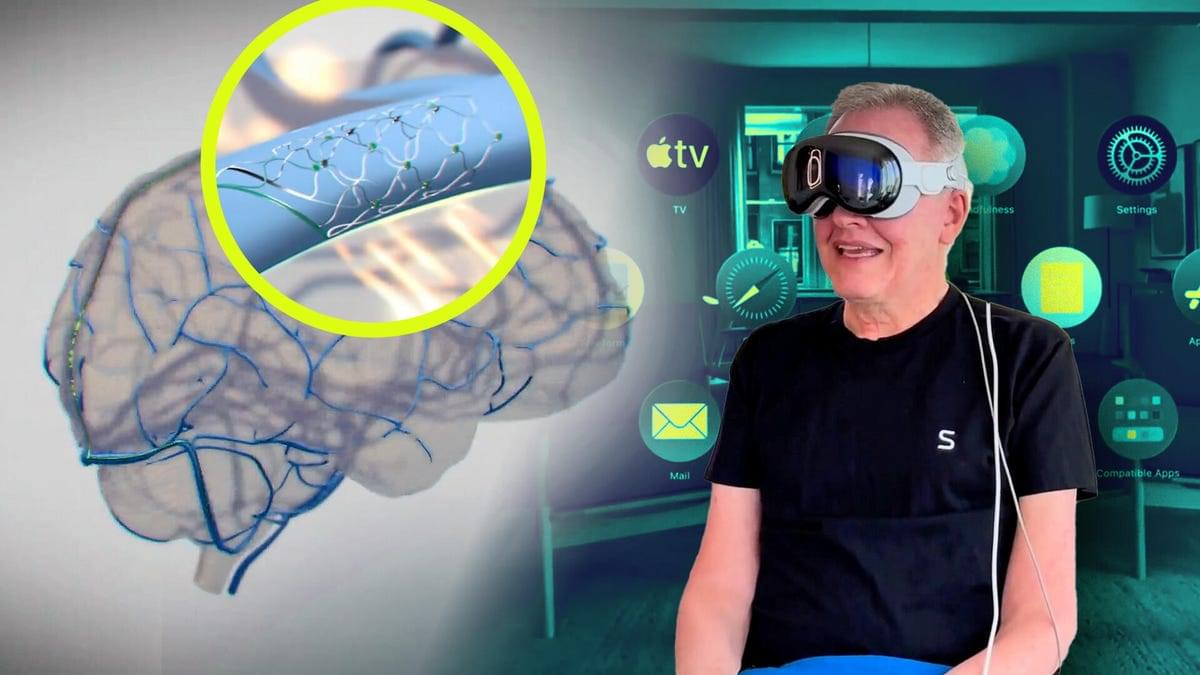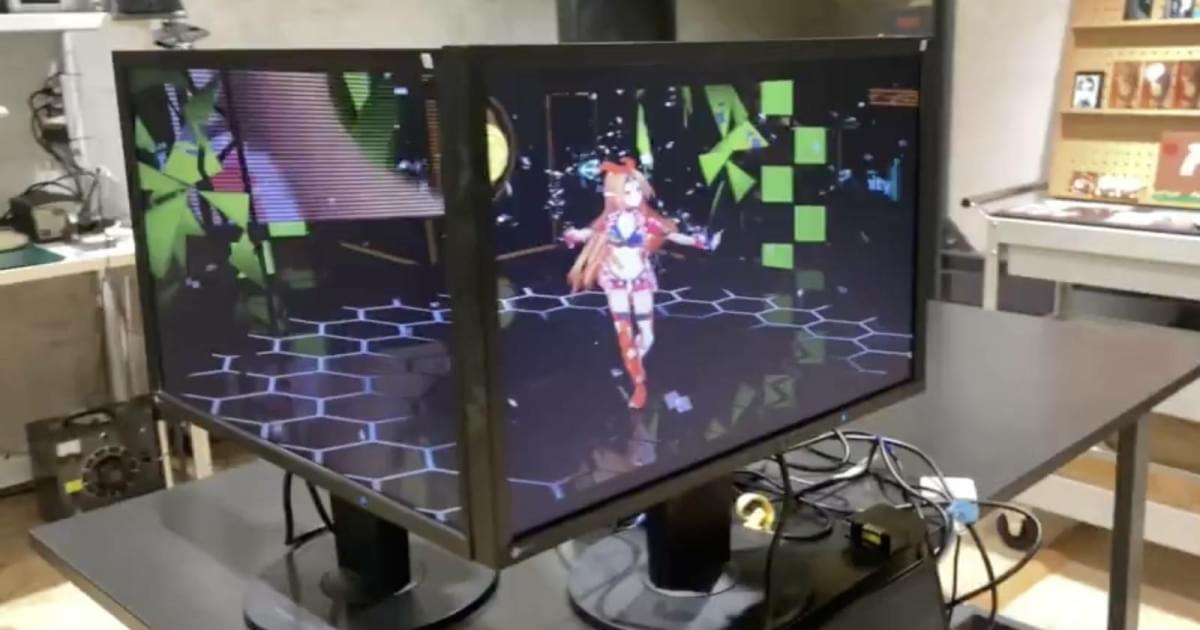A new paper explores how generative AI is transforming the way we interact with the dead, from virtual reality reunions to lifelike digital avatars.



With smartphones, game consoles and computers, it’s easy to rack up screen time these days. Of course, this isn’t great for your eyes, as anyone who has suffered an eyestrain hangover after spending hours gaming or doomscrolling knows. Staring at screens all the time tires out the ciliary muscles in your eyes that are responsible for focusing on objects, which can cause you to become near-sighted. However, the answer to improving your vision could be… more gaming?
In a recent study, researchers at Kwansei Gakuin University in Japan developed a VR game that aims to improve players’ eyesight. Although more research is needed, this game could potentially be used to help people with simple myopia (near-sightedness) bolster their vision.
It’s a relatively simple target shooting game developed in Unity for Meta Quest 2. The game features three lanes, each with a circular target on a stick. Pressing down the trigger button on the controller activates a virtual laser beam. Pointing this laser towards a lane highlights the lane and target and puts the player into “aim” mode. But to successfully hit the target, players have to move the controller’s stick in the direction indicated by the small Landolt C (a black ring shape with a gap used in Japanese eye tests) in the middle of the target.
Gabe Newell, co-founder of Valve, sat down with IGN for a chat about the company, the promise of VR, and Newell’s most bleeding edge project as of late, brain-computer interfaces (BCI).
Whenever I used to think about brain-computer interfaces (BCI), I typically imagined a world where the Internet was served up directly to my mind through cyborg-style neural implants—or basically how it’s portrayed in Ghost in the Shell. In that world, you can read, write, and speak to others without needing to lift a finger or open your mouth. It sounds fantastical, but the more I learn about BCI, the more I’ve come to realize that this wish list of functions is really only the tip of the iceberg. And when AR and VR converge with the consumer-ready BCI of the future, the world will be much stranger than fiction.
Be it Elon Musk’s latest company Neuralink —which is creating “minimally invasive” neural implants to suit a wide range of potential future applications, or Facebook directly funding research on decoding speech from the human brain—BCI seems to be taking an important step forward in its maturity. And while these well-funded companies can only push the technology forward for its use as a medical devices today thanks to regulatory hoops governing implants and their relative safety, eventually the technology will get to a point when it’s both safe and cheap enough to land into the brainpan’s of neurotypical consumers.
Although there’s really no telling when you or I will be able to pop into an office for an outpatient implant procedure (much like how corrective laser eye surgery is done today), we know at least that this particular future will undoubtedly come alongside significant advances in augmented and virtual reality. But before we consider where that future might lead us, let’s take a look at where things are today.


Apple is making progress on a standard for brain implant devices that can help people with disabilities control devices such as iPhones with their thoughts. As reported in The Wall Street Journal, Apple has plans to release that standard to other developers later this year.
The company has partnered with Synchron, which has been working with other companies, including Amazon, on ways to make devices more accessible. Synchron makes an implant called a Stentrode that is implanted in a vein on the brain’s motor cortex. Once implanted, the Stentrode can read brain signals and translate that to movement on devices including iPhones, iPads and Apple’s Vision Pro VR headset.
As we saw last year, a patient with ALS testing the Synchron technology was able to navigate menus in the Vision Pro device and use it to experience the Swiss Alps in VR. The technology could become more widely available to people with paralysis. The company has a community portal for those interested in learning about future tests.
What if with the condition machine super intelligence is possible once one comes into existence it sends von Neumann machines that converts solar systems into computers of like power and intelligence such machines would be factories miles long and they as well would be do the same until the entire galaxy would become an artificially intelligent entity procreating matrioska brains.
Adi Newton’s track from the compilation “The Neuromancers. Music inspired by William Gibson’s universe” published by Unexplained Sounds Group: https://unexplainedsoundsgroup.bandca… dl, cd, book. Music by: Adi Newton, NYORAI, Oubys (Wannes Kolf), Mario Lino Stancati, Joel Gilardini, Tescon Pol, phoanøgramma, Dead Voices On Air, SIGILLUM S, Richard Bégin, André Uhl. Stories by: Stories by: Andrew Coulthard, Chris McAuley, Glynn Owen Barrass, J. Edwin Buja, Michael F. Housel, Paolo L. Bandera, Rusell Smeaton, Scott J. Couturier. The soundtrack of a future in flux As the father of cyberpunk, William Gibson imagined a world where technology and society collide, blurring the boundaries between human and machine, individual and system. His novels, particularly Neuromancer, painted a dystopian future where sprawling megacities pulse with neon, corporations rule from the shadows, and cyberspace serves as both playground and battlefield. In his vision, technology is a tool of empowerment and control, a paradox that resonates deeply in our contemporary world. Gibson’s work has long since transcended literature, becoming a blueprint for how we understand technology’s role in shaping our lives. The term cyberspace, which he coined, feels more real than ever in today’s internet-driven world. We live in a time where virtual spaces are as important as physical ones, where our identities shift between digital avatars and flesh-and-blood selves. The rapid rise of AI, neural interfaces, and virtual reality feels like a prophecy fulfilled — as though we’ve stepped into the pages of a Gibson novel. A SONIC LANDSCAPE OF THE FUTURE The influence of cyberpunk on contemporary music is undeniable. The genre’s aesthetic, with its dark, neon-lit streets and synth-driven soundscapes, has found its way into countless genres, from techno and industrial to synthwave and ambient. Electronic music, in particular, feels like the natural soundtrack of the cyberpunk world — synthetic, futuristic, and often eerie, it evokes the idea of a humanity at the edge of a technological abyss. The cyberpunk universe forces us to confront uncomfortable truths about the way we live today: the increasing corporatization of our world, the erosion of privacy, and the creeping sense that technology is evolving faster than we can control. Though cyberpunk as a literary genre originated in the 1980s, its influence has only grown in the decades since. In music, the cyberpunk ethos is more relevant than ever. Artists today are embracing the tools of technology not just to create new sounds, but to challenge the very definition of music itself. THE FUTURE OF MUSIC IN A CYBERPUNK WORLD Much like Gibson’s writing, the music in this compilation embraces technology not only as a tool but as a medium of expression. It’s no coincidence that many of the artists featured here draw from electronic, industrial, and experimental music scenes—genres that have consistently pushed the boundaries of sound and technology. The contributions of Adi Newton, a pioneering figure in cyberpunk music, along with artists such as Dead Voices On Air, Sigillum S, Tescon Pol, Oubys, Joel Gilardini, phoanøgramma, Richard Bégin, Mario Lino Stancati, Nyorai, Wahn, and André Uhl, each capture unique facets of the cyberpunk universe. Their work spans from the gritty, rebellious underworlds of hackers, to the cold, calculated precision of AI, and the vast, sprawling virtual landscapes where anything is possible—and everything is controlled. These tracks serve as a sonic exploration of Gibson’s vision, translating the technological, dystopian landscapes of his novels into sound. They are both a tribute and a challenge, asking us to reflect on what it means to be human in a world where technology has permeated every corner of our existence. Just as Gibson envisioned a future where humanity and machines converge, the artists in this compilation fuse organic and synthetic sounds, analog and digital techniques, to evoke the tensions of the world he foretold. Curated and mastered by Raffaele Pezzella (Sonologyst). Layout by Matteo Mariano. Cat. Num. USG105. Unexplained Sounds Network labels: https://unexplainedsoundsgroup.bandca… https://eighthtowerrecords.bandcamp.com https://sonologyst.bandcamp.com https://therecognitiontest.bandcamp.com https://zerok.bandcamp.com https://reversealignment.bandcamp.com Magazine and radio (Music, Fiction, Modern Mythologies) / eighthtower Please subscribe the channel to help us to create new music and videos. Great thanks to the patrons and followers for supporting and sustain the creative work we’re doing. Facebook:
/ unexplaineds… Instagram:
/ unexplained… Twitter:
/ sonologyst.

Many behavioral studies suggest that using landmarks to navigate through large-scale spaces—known as map-based navigation—is not established until around age 12.
A neuroscience study at Emory University counters that assumption. Through experiments combining brain scans and a virtual environment the researchers dubbed Tiny Town, they showed that five-year-olds have a brain system that supports map-based navigation.
The journal Proceedings of the National Academy of Sciences has published the finding, the first neural evidence that this cognitive ability is in place in such young children.
Fish are masters of coordinated motion. Schools of fish have no leader, yet individuals manage to stay in formation, avoid collisions, and respond with liquid flexibility to changes in their environment. Reproducing this combination of robustness and flexibility has been a long-standing challenge for human-engineered systems like robots.
